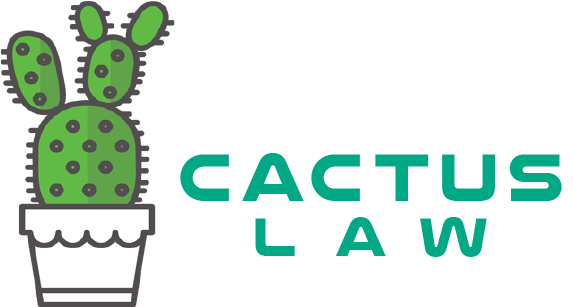Types of Partnerships
A partnership is a business arrangement between two or more people who do business together for profit (section 2, Partnerships Act, R.S.O. 1990, c. P.5). Notably, a partnership is not a separate legal entity from its partners. Certain legislation, however, such as the Excise Tax Act, R.S.C. 1985, c. E-15, may effectively treat a partnership as a person or other legal entity for the purposes of the applicable statute.
 How Partnerships and Their Partners are Taxed
How Partnerships and Their Partners are Taxed
For the purposes of the Income Tax Act, R.S.C. 1985, c. 1 (5th Supp.) (Income Tax Act), a partnership is not a taxable entity. The income or loss of a partnership, on the other hand, is calculated as if it were a distinct person living in Canada whose taxation year was its fiscal year (section 96(1)(a), (b), Income Tax Act). The partnership’s net revenue or loss for each fiscal period is subsequently awarded to the partners (and, in some cases, former partners). As an exception to these basic ideas, certain partnership resource expenditures are not subtracted in calculating partnership revenue but are instead distributed to the partners directly for purposes of computing the income of the respective partners.
A partner’s share of the partnership’s revenue for a fiscal period must (or may, according to the at-risk provisions mentioned below) be included (or deducted) in calculating the partner’s income (or loss) for the taxation year that includes the partnership’s fiscal year-end. However, in certain circumstances:
- An unreasonable allocation of partnership income (including an allocation of income from one or more specific sources agreed to primarily to reduce or postpone tax) is prohibited; and
- Partnership income must be allocated in a manner determined to be reasonable in the circumstances.
The income of a partnership is determined in line with the precise procedures outlined in the Income Tax Act for calculating business income. Because a partnership is considered as a distinct person for income purposes, the decision to take discretionary deductions, such as capital cost allowance (tax depreciation or CCA), is decided at the partnership level rather than by the partners individually. However, deductions for most expenses, including scientific research and experimental development (SR&ED), are not discretionary and must thus be claimed by the partnership for the period in which they are incurred.
In general, a partner’s share of any income or loss from a partnership from a specific source or location is treated as if it were the partner’s income or loss from that specific source or location, and any provisions of the Income Tax Act applicable to that type of income or loss apply to the partner (sections 96(1)(f)-(g), Income Tax Act). Taxable dividends, capital dividends, and net capital gains and losses earned or realized by a partnership, for example, will retain its character in the hands of the partners.
Dividends received from a corporation resident in Canada through a partnership by a Canadian resident partner who is an individual are treated as dividends received by the partner and are subject to the normal rules in the Income Tax Act applicable to dividends, including the enhanced gross-up and dividend tax credit for eligible dividends when the dividend received by the partnership is received from a corporation resident in Canada.
Dividends received by a corporate partner through a partnership are deductible in calculating taxable income to the same extent as if received directly by the corporate partner. Furthermore, for the purposes of Part IV of the Income Tax Act, tax on portfolio dividends (and determining whether the dividend payer and the corporate partner are “connected”), each corporate partner will be deemed to own its proportionate share of shares in another corporation owned by the partnership.
The Canada Revenue Agency’s (CRA) long-standing policy on foreign taxes paid by a partnership has been to consider each partner to have paid “the appropriate share of” any foreign taxes paid by the partnership for foreign tax credit purposes. In general, a partner’s “business income tax” and “non-business income tax” paid to the government of a foreign country for a year will include the partner’s share of foreign taxes paid by the partnership, and the partner will be entitled to claim foreign tax credits in accordance with the detailed rules provided in the Income Tax Act.
Losses from a business or property allocated to a “limited partner” (as defined in section 96(2.4) of the Income Tax Act for this purpose) in respect of a fiscal period are deductible by the limited partner in computing income only to the extent that the limited partner’s share of the loss does not exceed the limited partner’s at-risk amount (at-risk rules).
In general, a limited partner’s “at-risk amount” in respect of an LP at the end of a fiscal period is:
- The sum of the:
- the adjusted cost base (ACB) of the limited partner’s partnership interest at that time; plus
- the limited partner’s share of the LP’s income (if any) for the fiscal year,
- Less the aggregate of:
- all amounts owed by the limited partner or a person or partnership not dealing at arm’s length with the limited partner or a person or partnership not dealing at arm’s length with the LP; and
- Any amount or benefit to which the limited partner or a person not dealing at arm’s length with the limited partner is entitled, subject to certain exceptions, where the amount or benefit is intended to protect that person from any loss that it may sustain because of being a member of the partnership or holding or disposing of a partnership interest therein.
A limited partner’s share of any loss that is not deductible in a taxation year due to the at-risk rules is treated as a “limited partnership loss” in relation to the LP for that year. This loss may be deducted against income from any source in future years to the extent that, generally, the limited partner’s at-risk amount in that LP at the end of the partnership’s last fiscal period ending in that year exceeds the limited partner’s share of any losses of the LP for that fiscal period. Furthermore, while this loss can be carried forward indefinitely, it will no longer be deductible when the LP that incurred the loss dissolves, since there will no longer be an at-risk amount in relation to that LP.
Partnerships can claim certain investment tax credits, which are subsequently distributed to partners in proportion to their partnership stakes. The at-risk requirements also apply to a limited partner’s investment tax credits.
The Tax Advantages and Disadvantages of Partnerships vs. Corporations
Income and Losses Can Flow-Through
Because a partnership is not a taxable entity, it is a more appealing business or investment vehicle for tax-exempt companies than a corporation, which is.
A key benefit over a corporation is the automatic flow-out of partnership losses to partners. Losses in a company are locked and may only be used to offset other income in previous and future years within the limits specified by the Income Tax Act. Non-capital losses, for example, can be carried back three years and forward 20 years (section 111(1)(a), Income Tax Act). Furthermore, the Income Tax Act restricts or forbids unrelated people from gaining access to a corporation’s historical and accrued losses. As a result, monetizing losses locked in a corporation is challenging.
If it is anticipated that the start-up firm will incur initial losses, a partnership may be a helpful first business form from a tax standpoint (which can often be the case). Once the partnership company becomes lucrative, a tax-deferred rollover to a corporation under section 85 of the Income Tax Act may be explored.
Small Business Deduction and Tax Deferral on Retained Earnings Available to Canadian-Controlled Private Corporations
When compared to the higher marginal tax rates for individuals, corporate tax rates on active company income are comparatively modest. The highest combined federal and Ontario income tax rate for an individual in 2021 is 53.53 percent (on income above $220,000). In instance, the maximum combined federal and Ontario income tax rate for a corporation on active business revenue in 2021 is 26.5 percent (25 percent for manufacturing and processing income). A Canadian-controlled private company (CCPC) is typically eligible for a small business deduction (SBD) on the first $500,000 of active business income produced in Canada, lowering the total tax rate to 12.5%.
Exemptions From Capital Gains
The use of a corporation as a business vehicle allows shareholders to possibly access the lifetime capital gains exemption (CGE) on a future sale of corporation shares provided the shares qualify as qualified small business corporation (QSBC) shares under the Income Tax Act at the time of sale.
The lifetime CGE in 2021 is $892,218 because of indexing. The CGE is only available for profits realized by an individual and gains assigned to an individual by a trust. Indeed, one of the primary benefits of holding shares through a family trust is the possibility for CGE amplification.
In general, the CGE is possible if a small business company (SBC) fulfills specific asset composition requirements and the shares subject to disposal have been owned by the vendor or a connected person for at least two years. For this purpose, an SBC is a CCPC in which all or substantially all of the FMV of the corporation’s assets are employed primarily in an operating company in Canada.
The CGE on the disposition of a partnership stake has no comparable. The two-year hold period requirement for QSBC shares, on the other hand, does not apply if shares are received by an individual as part of a transaction or series of transactions in which the person (or a partnership of which the person is a member) disposes of all or substantially all of the assets used in an active business carried on by that person (or partnership) to the corporation. Instead of selling a partnership company or a partnership stake, examine if the CGE may be obtained by effectively forming the partnership under sections 85(2) and (3) of the Income Tax Act and then selling the shares.
Splitting Family Income
In addition to possibly increasing the CGE through a family trust, the capacity of a corporation to distribute dividends can give an owner-manager with more options to split revenue with family members than if the same firm is conducted through a partnership. An owner-manager may decrease their family’s aggregate income tax obligation by distributing dividends to family members who are taxed at lower marginal tax rates, subject to strict attribution requirements and the tax on split income.
An inappropriate allocation of partnership revenue among non-length arm’s people is banned in the partnership setting, and partnership income shall be allocated in a manner considered to be reasonable in the circumstances. This deeming rule makes utilizing a partnership to share revenue with family members considerably more difficult than using a corporation to split income.
For a more detailed discussion of the tax and commercial law advantages and disadvantages of conducting a business through a partnership, please contact Cactus Law today to speak with a lawyer specializing in corporate law.
Disclaimer
The information presented above is solely for general educational and informational purposes. It is not intended to be, and should not be taken as, legal advice. The information given above may not be applicable in all cases and may not even reflect the most recent authority after the date of its publication. As a result, please refer to all updated legislation, statutes, and amendments. Nothing in this article should be relied on or acted upon without the benefit of legal advice based on the specific facts and circumstances described, and nothing in this article should be interpreted otherwise.
About the Author
Kanwar Gujral is entering his third year at Osgoode Hall Law School in Toronto, Ontario. He has a dedicated interest in real estate, business, and corporate law.

